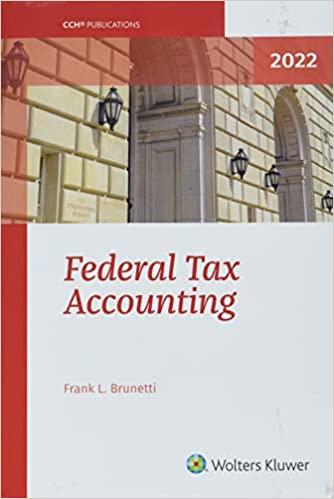Answered step by step
Verified Expert Solution
Question
1 Approved Answer
One complete question Financial statements for Adams Company follow. ADAMS COMPANY Balance Sheets As of December 31 Year 4 Year 3 $ 16,500 20,100 53,000
One complete question 



Financial statements for Adams Company follow. ADAMS COMPANY Balance Sheets As of December 31 Year 4 Year 3 $ 16,500 20,100 53,000 127,000 26,000 242,600 22,000 260,000 27,800 $551,600 $ 12,500 6,100 45,000 135,000 11,000 209,600 15,000 245,000 22,000 $491,600 Assets Current assets Cash Marketable securities Accounts receivable (net) Inventories Prepaid items Total current assets Investments Plant (net) Land Total assets Liabilities and Stockholders' Equity Liabilities Current liabilities Notes payable Accounts payable Salaries payable Total current liabilities Noncurrent liabilities Bonds payable Other Total noncurrent liabilities Total liabilities Stockholders' equity Preferred stock, (par value $10, 54 cumulative, non-participating: 6,000 shares authorized and issued) Common stock (no par; 50,000 shares authorized; 10,000 shares issued) Retained earnings Total stockholders' equity Total liabilities and stockholders' equity $ 19, 200 138,800 22,000 180,000 $ 13,900 125,000 16,000 154,900 110,000 25,000 135,000 315,000 110,000 20,000 130,000 284,900 60,000 60,000 116,600 236,600 $551,600 60,000 60,000 86,789 206,700 $491,600 Year 3 $220,000 5,200 225,200 ADAMS COMPANY Statements of Income and Retained Earnings For the Years Ended December 31 Year 4 Revenues Sales (net) $240,000 Other revenues 8,200 Total revenues 248,200 Expenses Cost of goods sold 120,000 Selling, general, and administrative 56,000 Interest expense 8,300 Income tax expense 28,000 Total expenses 212,300 Net earnings (net income) 35,900 Retained earnings, January 1 86,700 Less: Preferred stock dividends 3,000 Common stock dividends 3,000 Retained earnings, December 31 $116,600 106,000 51,000 7,500 27,000 191,500 33,700 59,000 3,000 3,000 $ 86,700 Required Calculate the following ratios for Year 4 and Year 3. Since Year 2 numbers are not presented do not use averages when calculating the ratios for Year 3. Instead, use the number presented on the Year 3 balance sheet. a. Working capital. b. Current ratio. (Round your answers to 2 decimal places.) c. Quick ratio (Round your answers to 2 decimal places.) d. Receivables turnover (beginning receivables at January 1. Year 3. were $46,000). (Round your answers to 2 decimal places.) e. Average days to collect accounts receivable. (Use 365 days in a year. Round your intermediate calculations to 2 decimal places and your final answers to the nearest whole number.) f. Inventory turnover (beginning inventory at January 1, Year 3, was $141.000). (Round your answers to 2 decimal places.) 9. Number of days to sell inventory. (Use 365 days in a year. Round your intermediate calculations to 2 decimal places and your final answers to the nearest whole number.) h. Debt-to-assets ratio. (Round your answers to the nearest whole percent.) I. Debt-to-equity ratio. (Round your answers to 2 decimal places.) 1. Number of times interest was earned. (Round your answers to 2 decimal places.) k. Plant assets to long-term debt. (Round your answers to 2 decimal places.) 1. Net margin. (Round your answers to 2 decimal places.) m. Turnover of assets (average total assets in Year 3 is $491,600). (Round your answers to 2 decimal places.) n. Return on investment (average total assets in Year 3 is $491,600). (Round your answers to 2 decimal places.) o. Return on equity (average stockholders' equity in Year 3 is $206,700). (Round your answers to 2 decimal places.) p. Earnings per share (total shares outstanding is unchanged). (Round your answers to 2 decimal places.) 4. Book value per share of common stock. (Round your answers to 2 decimal places.) T. Price-earnings ratio (market price per share: Year 3. $11.80; Year 4, $12.60). (Round your intermediate calculations and final answer to 2 decimal places.) s. Dividend yield on common stock. (Round your answers to 2 decimal places.) b. $ $ d. Yoar 4 62,600 1.35 0.50 4.90 times 74 days times days % e. Year 3 54.700 1.35 0.41 4.84 times 75 days times days % 9 h. 1. Working capital Current ratio Quick ratio Receivables turnover (beginning receivables at January 1, Year 3, were $46,000) Average days to collect accounts receivable Inventory turnover (beginning inventory at January 1. Year 3, was $141,000) Number of days to sell inventory Debt-to-assets ratio Debt-to-equity ratio Number of times interest was eamed Plant assets to long-term debt Net margin Turnover of assets (average total assets in Year 3 is $491,600) Return on investment (average total assets in Year 3 is $491,600) Return on equity (average stockholders' equity in Year 3 is $206,700) Earnings per share (total shares outstanding is unchanged) Book value per share of common stock Price-samnings ratio (market price per share: Year 3, $11.8; Year 4, $12.60) Dividend yield on common stock times 1 k. 1 times % % m. n % 0 % p % % per share per share per share per share 9 6 % 



Step by Step Solution
There are 3 Steps involved in it
Step: 1

Get Instant Access to Expert-Tailored Solutions
See step-by-step solutions with expert insights and AI powered tools for academic success
Step: 2

Step: 3

Ace Your Homework with AI
Get the answers you need in no time with our AI-driven, step-by-step assistance
Get Started


